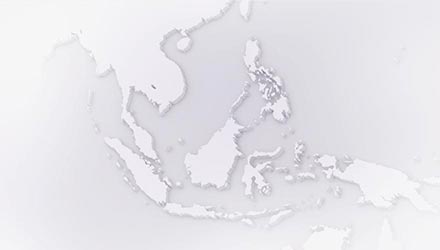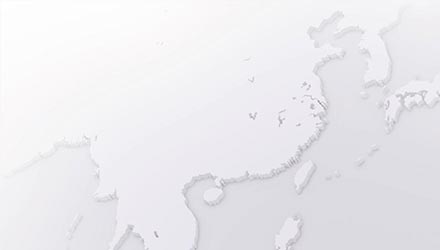Overseas Production Starts, Everything is New
 C310
C310
In 1959, Honda established American Honda Motor Co. (AH), a sales company, followed by European Honda GmbH (EH) in then West Germany in 1961. In line with the words of company founder Soichiro Honda, “If it's not the best in the world, it's not the best in Japan,” Honda entered the European market, the home of motorcycles, where annual demand of more than 2 million units was expected.
However, at the time, the EEC (European Economic Community, later the European Union,EU) was implementing import restrictions to protect domestic industries. In 1962, Honda established in Belgium the first production plant for a Japanese company in Europe, Honda Motor (later to become Belgium Honda (BH)), which from 1963, began knockdown production, importing engines and some parts from Japan and procuring other parts locally. Initially, production was limited to three models, the Type C310 moped and Super Cub (C100 and C110), with a monthly production capacity of 10,000 units under a one-shift production system.
The decision to start small in a market of over 2 million units per year was based on the idea of expanding the scale of production and increasing production capacity after establishing a track record, as this was the company’s first overseas attempt. This concept of starting small and growing big became the basic policy for subsequent local production. However, the start of the project was a series of hardships.
Due to delays in construction caused by a harsh winter, the plant was finally completed in May 1963, and the first Super Cub C100 rolled off the production line. However, the plant faced a series of difficulties, including high costs for parts suppliers, inconsistent industrial standards, and communication with the local associates, whose languages and cultures were divided within Belgium. Eventually, the plant faced the risk of closure due to sluggish sales of the C310 and lack of funds. It took several years to rebuild the plant after a concerted effort with local associates.

Honda’s first overseas production began in a factory in Belgium in 1963, initially knockdown production.
Following the United States and Europe, Honda turned its attention to Asia. In 1964, it established a sales company, Asian Honda Motor (ASH), in Thailand, and the following year, a motorcycle production plant, Thai Honda Manufacturing (TH). In the 1970s, the company expanded into South America by establishing a motorcycle production plant, Moto Honda da Amazonia Limitada (HDA), in 1975, and began market development in Brazil. Despite being affected by economic recession and changes in the political situation, Honda continues to grow with Brazil to this day.
Expanding Production Bases Throughout the Enormous
Asia Region
 NOVA-S developed based on a survey of the
NOVA-S developed based on a survey of the needs of young people in Thailand
Honda achieved the number one share in Thailand’s motorcycle market
When Honda first entered the Thai market, the number of motorcycles owned in Thailand was approximately 100,000, but by 1967, when production of the Super Cub C50 began, the number had grown to 150,000. Of the 50,000 motorcycles produced in Thailand, 70% were Honda products, and the country grew rapidly to become an important base for Honda in Asia.
In the mid-1960s, two other Japanese manufacturers had joined Honda in the flourishing Thai market, which flourished, but in the 1970s, the Thai government introduced legislation to protect and foster the domestic motorcycle industry. Restrictions on the issuance of assembly licenses, restrictions on domestic production of parts, bans on imports of finished vehicles, and higher tariffs on parts were implemented in stages up to the 1980s.
As a result, Japanese complete motorcycle manufacturers were forced to increase the local procurement rate of parts and shifted to in-house production. They were forced to either ask Japanese parts suppliers to enter the Thai market, or to promote the development of local Thai companies. Honda responded in two directions: local procurement and in-house production, including the entry of Japanese suppliers.
In the mid-1980s, small-displacement high-output two-stroke models were popular in Thailand, accounting for more than 80% of the market share. In this market, Honda was mainly selling 4-stroke models such as the Super Cub, and although it introduced a 2-stroke model, it did not take into account local needs and preferences and needs, and continued to struggle to the point where its market share was only the third largest, and considered withdrawing from the market altogether. Around the mid-1980s, young people began to customize their Super Cubs by removing the leg shields and other parts and applying fashionable coloring.
In response, Honda decided to introduce its first two-stroke, clutch-equipped family sport model, the NOVA-S in 1987. This model was developed by Honda’s Southeast Asian R&D based in Singapore at the time, after conducting market research on motorcycle customization trends among young people in Thailand. This model quickly boosted Honda’s sales volume, and in 1988, Honda took the number one share of the Thai motorcycle market.
This was a shift from a product-out approach based on the originality of the Super Cub, to a market-in philosophy based on the preferences of users and the market. It is fair to say that production in Thailand became completely independent of Japan.
The Thai motorcycle market saw explosive growth, driven by the country’s rapidly growing economy. In 1997, Honda R&D Southeast Asia (HRS) was established, and local development such as DEB*2-led surveys of user needs and local initiatives were implemented, further accelerating the creation of high-sales products.
- D: development, E: engineering/production, B: buying/purchasing
Development of Human Resources and Production Systems
that Enabled Highly Efficient Honda Quality Mass Production
As Thailand is geographically located in the center of Southeast Asia, Honda actively backed Thailand as its base in the ASEAN region in anticipation of a significant increase in regional production. In addition to training local associates, Honda was also involved in community service and giving back to the region, by cooperating in the construction of schools and establishing scholarships.
“Honda is actively involved in the Thai culture of Thambun (charity based on Buddhist beliefs). Donations have come in a variety of forms, including funds raised by the Honda Group or through charity rallies in which TH solicits donations from its affiliated companies, but the money raised is used to build elementary schools and for scholarships,” said Toshio Kawatsu, TH president at the time. During his tenure, he had focused on building trust and securing human resources.
When the Thai economy was severely damaged by the 1997 currency crisis, for example, other companies dissolved joint ventures and even closed their plants, but TH did not lay off any of its full-time associates, despite the fact that its performance had dropped from 1 million units to 400,000 in the previous fiscal year. Instead, it rotated personnel through training in Japan and maintenance work at the plant.
Although layoffs were inevitable for part-time associates, TH promised that they would be the first to be called upon when they could return, and kept its promise. In addition, the year-end party, which had previously been held only for full-time associates, was made open to part-time associates as well, and a party was held for 10,000 people.
“They were motivated by the understanding that Honda did not run away during the crisis and cared about its associates. Of course, the reliability of products is important, but it is even more important to be able to meet, or at least not betray, the expectations of the regions in which Honda operates. I believe this was the catalyst for the company’s later achievement of an 80% share of the Thai market. The touchstone for Japanese expatriates is whether or not they can accept the people and culture of the country or region. If they are not able to do so, they will most likely not be successful.” (Kawatsu)
At the time, the strategy was to launch a new commuter model for the ASEAN region first in Thailand, and then expand to Indonesia and Vietnam as a derivative of that model. It was essential to strengthen local development in Thailand and provide backup for the other countries, but differences in language and customs also hindered communication among the countries.
“We invited associates from Vietnam and Indonesia to TH’s prototyping department and worked together with them to mature the technology. If it is difficult for Thai people to go to Indonesia or Vietnam to give guidance, we call the Vietnamese and Indonesian associates to Thailand. Through this system, the transfer of technology and manufacturing systems began to function well.” (Kawatsu)
Of course, the process was not simple, and there were many difficulties in building the new plant. The “500,000 units per pack” method was adopted to establish a streamlined and uniform production site in each country, and to make a highly efficient production system the global standard.
Establishing “Made by Global Honda,”
Producing at the Optimum Site and Supplying to the
Optimum Region
 Concept of the “500,000 units per pack” plant, which enables integrated production from materials to completed vehicles.
Concept of the “500,000 units per pack” plant, which enables integrated production from materials to completed vehicles.
The “500,000 units per package” concept, which enabled a massive increase in production in various locations, was a physical standard that standardized the number of processes, equipment, building area, personnel, welfare facilities, and distribution facilities required to produce 500,000 units annually, as a single line unit.
“The characteristics of this method are the ability to build new plants and lines in the shortest possible time, the timely introduction of new models, and the ability to lead to full production in a short period of time. The plant encompassed everything from materials to finished vehicles, with each line working 1,000 units per shift, or 2,000 units per two shifts, or 500,000 units per 250 days of operation,” said Fumio Sekiguchi, then in the Production Division’s Motorcycle Production Planning Office.
With two lines at each plant, annual production of 1,000,000 units could be achieved smoothly without the concern of building lines at each plant. The introduction of this system also resulted in a 20% reduction in space and a 30% reduction in line personnel, mainly due to the unification of dispersed parts manufacturing. This was not only a dramatic improvement, but also had a significant effect on quality control.
“It is very difficult to manage a team of, say, 40 to 50 associates on a line. A 30% reduction in the number of associates would reduce the number to about 30, which would improve management efficiency, allow us to watch people more closely, and make it easier to train new associates.” (Sekiguchi)
The “500,000 units per pack” system was first introduced at P.T. Astra Honda Motor’s (AHJ) third plant in Indonesia, and was successively introduced in the Philippines, Pakistan, China, Vietnam, and other Asian countries such as India to meet the needs of the expanding market.

AHJ’s third factory was the first “500,000 units per pack” factory
There were, however, problems. Since one pack was 500,000 units, two packs were 1,000,000 units, and three packs were 1,500,000 units. How many packs could one plant produce? After exploring the limits at each plant, it became clear that from the standpoint of logistics and manpower, the limit for a single plant was three packs, or 1.5 million units. In other words, the limit of this method was 3 packs, and a fourth pack must be set up in another area. In addition, if a fourth pack was needed due to plans to increase production, it was important to find the next candidate site quickly.
As a result of this expansion of intra-regional supply, with Thailand taking the lead, Honda was able to achieve Honda quality regardless of where in the world it produced, and began exporting complete models and parts from Thailand, India, Indonesia, and China to various countries, including Japan. However, there were other major challenges on the path so far.
In Vietnam, the motorcycle market grew rapidly as incomes rose, and by the early 1990s, the market had grown to 500,000 units. Honda began local production in 1997, and the 110 cc Super Cub-style SUPER DREAM became popular for its durability, but its price was too high for the local population. Then, Chinese-made copies of the SUPER DREAM appeared on the market at one-fourth to one-fifth the price, and the market quickly expanded to 2 million units. Honda’s share of the Vietnamese motorcycle market dropped to less than 10%.
 In 2001, Sundiro Honda was established as a partnership with a manufacturer of copies of Honda products, to incorporate know-how of low-cost motorcycle manufacturing.
In 2001, Sundiro Honda was established as a partnership with a manufacturer of copies of Honda products, to incorporate know-how of low-cost motorcycle manufacturing.
 Sundiro Honda’s Hainan Plant
Sundiro Honda’s Hainan Plant
Honda first entered the Chinese market in the 1980s and gained popularity with its CG125 motorcycle and Super Cub models, but the Chinese market stagnated due to the motorcycle registration system introduced in the mid-1990s. Surplus parts flooded the market, and copy manufacturers emerged which assemble these parts and sold them as complete motorcycles. At the time, the scale of the Chinese market was 6 million units per year, with prices ranging from 3,500 to 5,500 yuan, most of which were made by copy manufacturers. Honda’s prices were twice as high, and its market share was a critically low 0.3%.
Tianjing Honda Motorcycle Co., Ltd (Tianjin-Honda) entered into a partnership with the motorcycle business division of Sundiro Holding Co., Ltd. (Hainan-Sundiro), China’s largest copy manufacturer. Honda gained the knowhow to produce motorcycles at extremely low cost, and to wipe out the copy models with high-quality, ultra low-priced models. In 2001, Hainan-Sundiro, needing to survive in the global market, agreed to jointly establish Sundiro Honda Motorcycle Co., Ltd. (Sundiro Honda).
“We had two objectives at the time. One was to develop suppliers of copied parts so that they could be used as official Honda parts. The other was to maintain their cost competitiveness as much as possible, but this was difficult. Until then, Honda had no grasp of the actual cost of goods sold and pricing, and was disappointed that “Japanese staff of purchase division do not understand Chinese market prices, and there is no output,” said Hitoshi Yamamoto, who was in charge of two-stroke engine technology at the Motorcycle R&D Center.
At the time, Yamamoto traveled China to find a suitable supplier for Honda. He investigated parts made by copy manufacturers, and for parts that were superior in cost and quality, he found the manufacturers and procured parts from them. Of the approximately 600 companies he visited, only six were able to meet Honda’s standards. Many of them had to be guided from the basics such as factory environment and process management.
“At the time, they were disorganized, dirty and undisciplined, so for example, cutting parts were covered with chips, and lines were running the wrong way. They did not know the basics, so they were shipping defective parts without concern. Correcting and improving these problems was a difficult part of the process and took about four years.” (Yamamoto)
This is a path that must be taken when shifting to local production, to varying degrees, but as Kawatsu said, it also made cultural and ethnicity differences more apparent.
“The important thing is not to think from a superior perspective. And, also obvious, there is always an appropriate price range for a product so that there will be a repeat business. I think Honda at that time learned this sense and way of thinking in the course of its operations in China.” (Yamamoto)
In 2002, Honda launched the low-priced Super Cub-style Wave α in Vietnam to counter Honda copies. Using parts from China, Honda drastically reduced costs and achieved a price that was approximately 40% lower than the previous model. Similarly in Thailand, Honda launched the Wave 100, a lower-grade sibling of the Wave 110, in the same year as a precautionary measure against the influx of copied models. These models became explosive hits, attracting a new group of buyers. Honda’s target user base had already been expanded, but now there was even greater demand for Honda motorcycles.
In addition to local procurement and production, a network of global procurement of parts regardless of the country of production, developed over time, giving birth to a succession of products with prices that could be accepted beyond national borders.

Wave α was launched in Vietnam at a low price by thorough local procurement.

TH's assembly line dedicated to global motorcycle models






